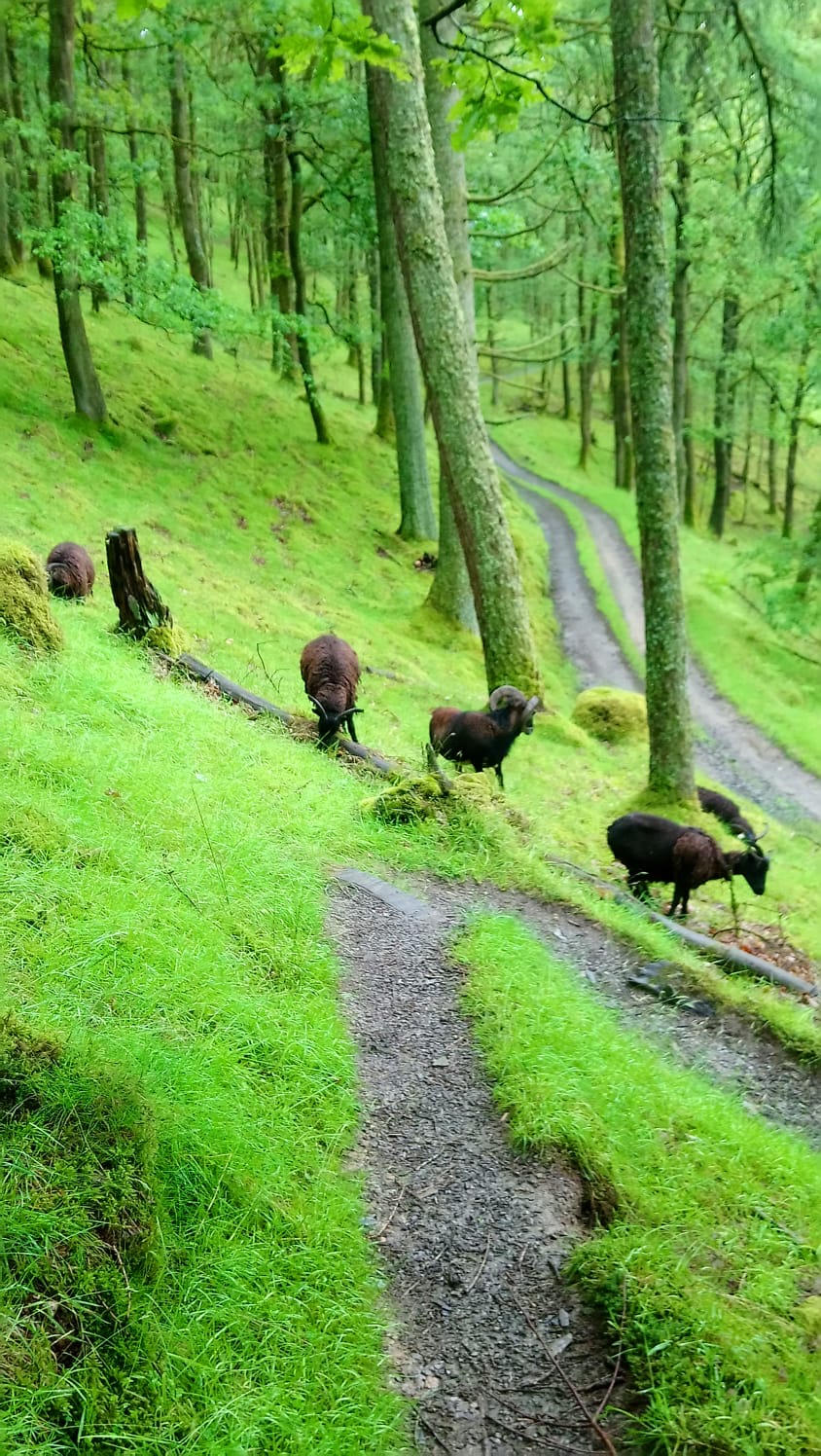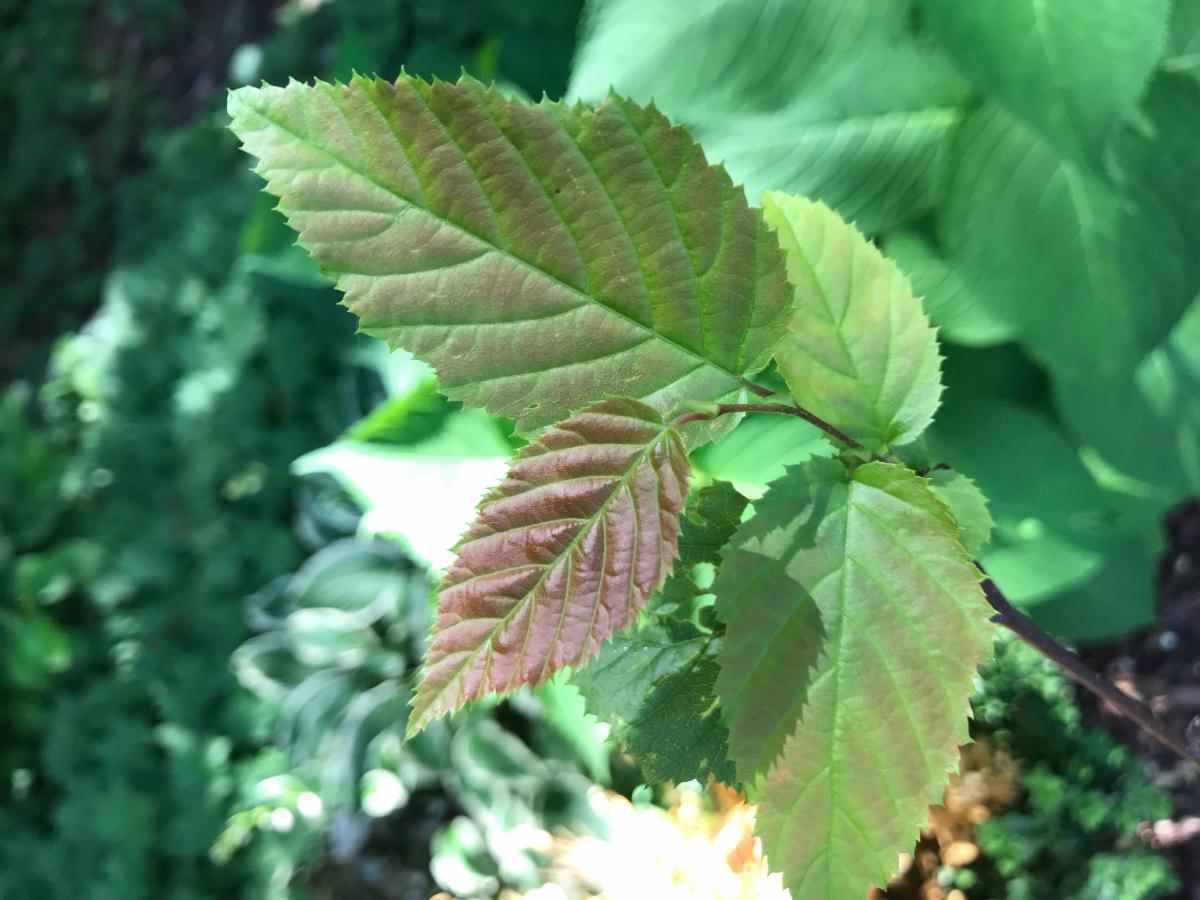|
1
head of cauliflower
1/2
C unsweetened coconut, almond or soy milk
1/2
C water
3/4
C flour
2
tsp garlic powder
2
tsp onion powder
1
tsp cumin
1
tsp of paprika
1/4
tsp salt
1/4
tsp pepper
Wing sauce
1
tbsp butter
1
C BBQ sauce
Preheat oven to 425. Line baking sheet with parchment paper.
Wash and cut cauliflower head into bite sized florets.
Mix all the ingredients (minus the butter and BBQ sauce, this is added separately) into a mixing bowl. Dip each floret into the mixture and coat evenly. Lay florets in an even layer on the parchment lined baking sheet. Bake for 25 minutes until golden brown.
Once the cauliflower is done, remove them from the oven and put all the baked florets into a mixing bowl with the wing sauce. Toss to coat evenly, spread all the florets coated in wing sauce out onto the same baking sheet.
Bake in the oven for another 25 minutes. Serve with ranch dip.
|
|
|
Remarkable Trees I have Seen
|
|
| |
|
The 'Tree of Life' is located in Audubon Park, New Orleans, Louisiana. It is a coast live oak (Quercus virginiana) whose native range is the lower coastal plain from Virginia to the Gulf of Mexico. The Tree of Life is reported to be 300 years old and 35 feet in circumference, although it seems much older than that. It is wider than it is tall, with a spread of 160 feet, its branches resting on the ground for support. Other old live oaks I have seen have had their large, heavy limbs torn away over time, leaving gaping wounds. But the Tree of Life was, for the most part, intact. Other than mulch over the root zone, the tree has had no special care. Did I mention it is also the home of five, very bustling beehives?
I was surprised that you can walk anywhere you want, climb it, and even get married under it too. No fences or park ranger to keep you away. So, next time you are in New Orleans, take time out to visit this remarkable tree. A tree that has witnessed floods, hurricanes and generations of people coming and going with nary a care. And go ahead and climb it if you dare; those bees are looking out for the tree.
|
|
The green color in plants comes from a large, hard-to-maintain and expensive to build molecule called chlorophyll. Chlorophyll is the centerpiece (literally and figuratively) of light capture and food production in plants called photosynthesis. Photosynthesis uses energy from the sun to make sugar from carbon dioxide and water. Chlorophyll is bound to special membranes inside leaf cells. Chlorophyll is the most precious of all molecules. All plants conserve, protect and maintain their chlorophyll. Without it, life on earth would cease to exist.
When the sun shines on chlorophyll, its molecules absorb red and blue light. The light that isn't absorbed is reflected as green, which is what our eyes see. Take an apple for instance. An apple appears red because the molecule of pigment in the apple's skin absorbs blue light, not red. Thus, we see red. Some plants that are pink or even dark red contain chlorophyll, but they are masked by other pigments like anthocyanins or flavonoids
.
With failing light, food, lack of nutrients or energy, loss of chlorophyll pigments are a first visible sign of problems. Yellowing or chlorosis in plants is a symptom of many different pests and environmental impacts, because chlorophyll production and maintenance is so sensitive to damage. In the autumn, plants break down and reabsorb valuable chlorophyll, letting the colors of other pigments show through. And new growth on plants is often tinged red, indicating the plant is pulling back on giving the leaves a full complement of valuable chlorophyll, only to lose it to browsers.
In evolution, chlorophyll was engineered in such a way to strongly absorb in the red region followed by absorption in the yellow and blue regions but, unfortunately the pigment is not designed to capture green light, and it is simply frittered away. Chlorophyll and money make the world go around. Funny, they are both green.

The emerald green of the plant world contrasts with the rams brown coat.

Because tender young leaves are prone to being eaten, certain plants do not put valuable chlorophyll into leaves until fully expanded and tough.
As a leaf starts to die in the autumn, substances that can be reused such as chlorophyll, are broken down and taken back into the tree, revealing the anthocyanin or red pigment.
|

Thanks for reading.
Happy Planting!
Faith Faith Appelquist President & Founder
|
|
|